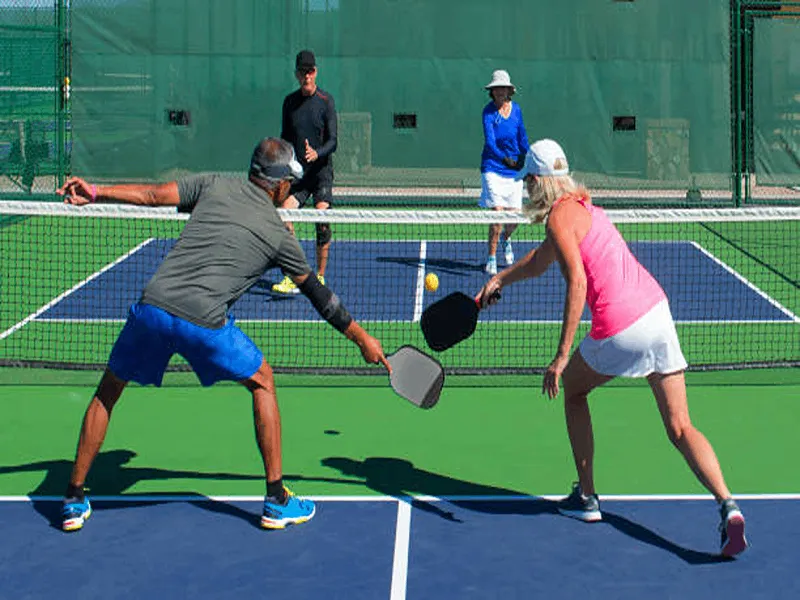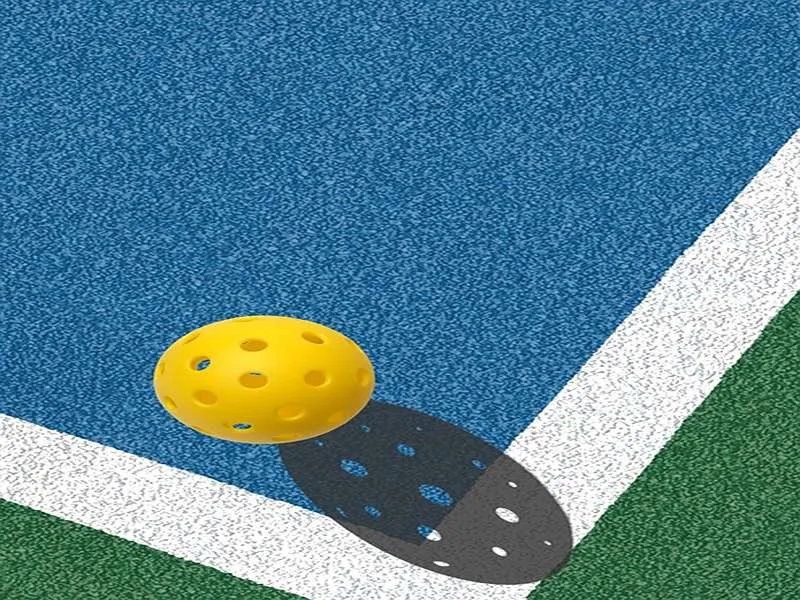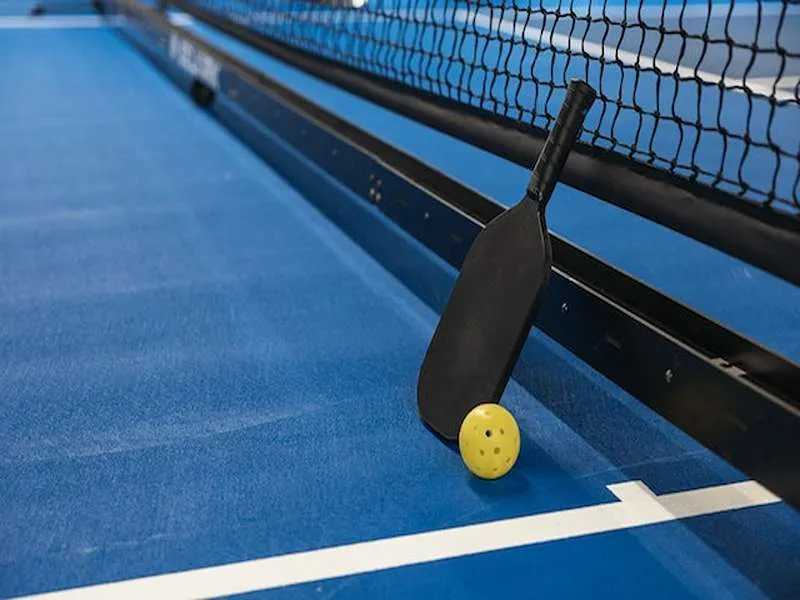Do you want to improve your skills for everyone’s favorite court sport? For an outsider, pickleball is just a simple racket game. But once you unveil the recreational layer of this sport, you’ll find many facets to this interesting game.
Practice is pivotal in progressing from a casual baller to a pickleball pro. Today, I will share the 10 most effective pickleball drills for beginners. I guarantee you will see a dramatic improvement in your game by practicing these best pickleball drills for beginners.
Contents
Why Do You Need Pickleball Drills?
Do you know I can drive straight to my home without even thinking about it? You are not surprised, aren’t you? Because most of us can drive to our homes or walk in the neighborhood passively without any hindrance. But how? Because you’ve done it so many times, there is zero resistance in converting your thought process to action.
Research has concluded that repetition thickens our myelin, which in turn lets neurons travel more quickly.
Similarly, when you practice pickleball drills with proper form repeatedly, it’s like building a superhighway in your brain. Initially, you might need to concentrate on the moves, but with practice, it becomes automatic, just like your daily commute.
This is how repetition helps improve skills by optimizing the neural pathways involved. So continue with pickleball training for beginners and use the right pickleball equipment to truly leave your mark on the court.
10 Best Pickleball Drills for Beginners
Let’s walk through the most effective pickleball drills for beginners to improve your gameplay:
Paddle Up
When I started playing this game, this was the first pickleball drill I practiced. This may seem simple, but believe me, it teaches the most critical aspect of the pickleball game.
Different parts of the paddle generate different types of speed and power, so understanding your paddle is a good way to embark on your journey.
To do this solo drill, just hit up the ball with your paddle with the aim of not letting it down on the ground. You will notice that the sweet spot will generate a powerful hit while the sides will lose power and control.
Hit Your Target
In this type of solo drill, you need to create a 36-inch high line on the wall to replicate the net. Then, create one or several squares above the line. The goal is just to create the targets and hit the ball on those targets.
Once the ball returns from the target, you need to let it bounce once. Then, hit again and continue hitting the ball in a row. You can try variations like increasing the distance or changing the angle. This wall drill was great for me when I practiced forehead shots while following the fundamentals.
Selfie Ball Bounce
This solo drill can be considered an advanced version of the “Paddle Up” drill. Instead of moving the ball up, you need to place your drill horizontally and hit it on the ground. Bend your knees and try to keep your body square. You can move your feet while hitting the shot.
This pickleball drill has helped me enhance my hand-eye coordination. I use this drill as a quick warm-up session before a pickleball game.

Source: iStock
Catch the Ball, Then Volley
The best part of pickleball is being able to catch the ball on your paddle. No, I don’t mean actually grabbing the ball, just like we do in baseball. Instead, you are deadening the coming shot by hitting the paddle without exerting the force.
For this type of drill, you need a partner. Hit the shot coming to you in a way that creates a little pop-up, and then hit it back to your partner. Your partner needs to catch the ball and then volley it back to you. This way, you will get a better feel of the ball and improve your handling as well.
Drop it
Now comes one of my favorite pickleball drills for beginners because this has significantly improved my drop shot.
In this drill, one person stands at the baseline and the other on the kitchen line of the pickleball court. The player on the kitchen line hits the ball with his paddle back to the person standing at the baseline. This player then hit the drop shot back towards the kitchen line.
Transition Zone Blocking
In this drill, one player needs to stand at the transition zone, which is basically a spot between the baseline and kitchen line on the opposite side of the court. The other person will need to stand in the opposite kitchen.
The person in the transition zone will drive towards the person in the kitchen line. The person in the kitchen line will block the shot so it can fall just over the net.
Drive it Back
Repeat the above-mentioned drill. But instead of blocking the shot, the person in the kitchen line will hit the return drive. This drill will help you learn the return shot when your opponent has driven the shot hard at you.
After mastering the skill of returning the drive shot through this pickleball practice, getting scores became a breeze for me.
Triangle Dinking
Another great drill on my bucket list for beginner to intermediate players. This teaches you to mix up your drinks, leaving your opponent guessing.
Mark some triangles on the opponent’s side and aim them in sequential order, like left, middle, and right. This drill is considered best for forehand and backhand shots.
Third Shot Drop
I consider this drink nothing more than a long dink. One player stands in the non-volley zone, while the other is close to the baseline. The non-volley zone player hits shots at the other player, who drops shots into the kitchen repetitively. This player learns the third shot drop while the non-volley zone player practices his returns.

Source: Pixabay
Forehand And Backhand Dinks
This is probably the most important step in pickleball drills for beginners. In this type of drill, two players stand opposite to each other. Then, they play down the line to each other. This results in one of the players hitting backhands while the other player hits a forehand. This drill has helped me a lot in improving my footwork and reaction time on the court.
FAQs
What is the 2-bounce rule in pickleball?
After the ball is served, the receiving team must let the ball bounce once before hitting. On the other side of the court, the serving team should also allow the ball to bounce once on its side before returning the shot.
What does 2.0 mean in pickleball?
According to the USAPA scoring system, 2.0 refers to individuals who are new to pickleball and have no previous athletic sports experience.
Can left-handed people play pickleball?
Yes, left-handed people can play pickleball. In fact, they have a great advantage in pickleball as they can use both hands equally well.
Wrapping Up
Now that you know pickleball drills for beginners, remember that becoming a pickleball pro takes time and dedication. Incorporate pickleball strategies for beginners into your practice routine, and you’ll see steady improvement in your game. Stay patient, keep practicing these pickleball tips for beginners, and most importantly, have a blast on the court. Soon enough, you’ll be acing those shots and leaving your opponents in awe. Wanna spruce up your spin game? In the next article, I will unravel the best pickleball paddles for a spin.
